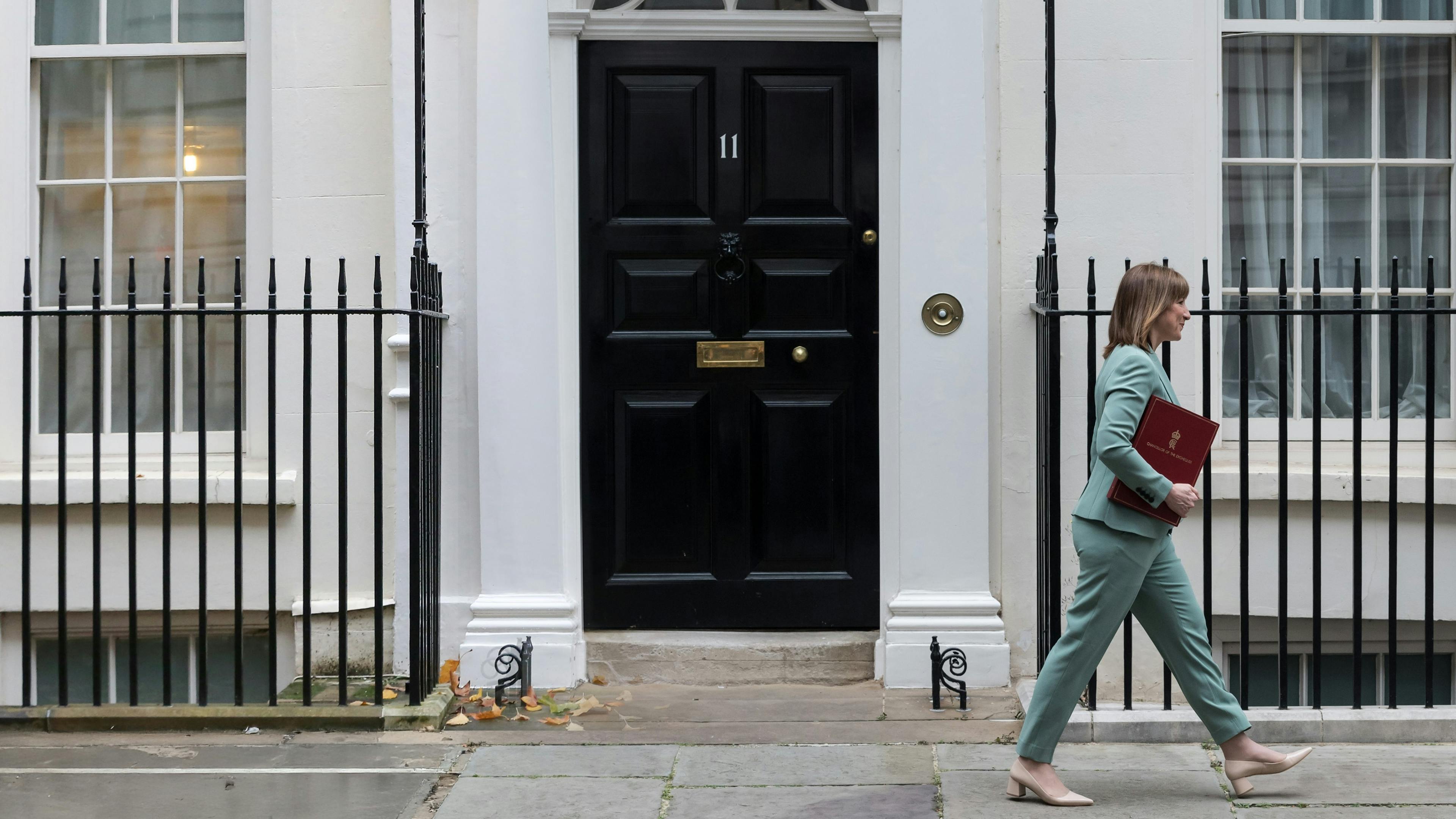Market Perspectives July 2025

View the full PDF document including total return indices, click here.
The Outlook for Interest Rates
Bond yields have moved around.
The modest headline return from bond markets over the last quarter (around +1.5%) disguises significant divergences within the various components of the Global Broad Market Index and the volatility that occurred in the days following President Trump’s shock tariffs announcement on 7th April – so called ‘Liberation Day’. The US stock market, the treasury bond market and the US dollar all fell sharply as confidence in the American system and was severely rattled by the arbitrary and apparently amateurish way in which this sudden major policy change was implemented. Stock and bond markets around the world fell in sympathy with Wall Street as no country was likely to escape lightly from a trade war given its adverse impact on both economic growth and inflation. Corporate bond spreads therefore also blew out at this time; safe havens were very hard to find in those dark days of April.
Short-dated bonds have outperformed long-dated issues.
Since then, President Trump has back-tracked considerably (arguably thanks to the ‘bond vigilantes’), treasury yields have stabilised and stock markets have not only recovered their losses but gone on to make new all-time highs. Only the US dollar has continued to fall. However, as far as bond markets are concerned, it feels like an uneasy truce: it is notable that long-dated government bonds are underperforming short-dated issues.
The latter are buoyed by hopes of central bank interest rate cuts, whereas the former are becoming increasingly concerned by rising government deficits. The ‘One Big Beautiful Bill’ probably means the US will run an 8% deficit this year, which is almost unheard of at a time when economic growth is healthy; and in the UK, the government seems unable to control spending growth at a time when the tax burden is already approaching its highest since 1948 and fiscal headroom, according to the Office of Budget Responsibility’s fiscal rules, has evaporated. Accordingly, whilst 5-year and 10-year gilt yields have fallen over the last three months, the 30-year yield has gone up (touching nearly 5.6% at one point).
Trade-weighted US dollar

Source: Bloomberg.
The US dollar has been falling…
Ordinarily, the imposition of tariffs by a country would lead to that country’s currency appreciating as the markets adjust to new levels of competitiveness between trading nations. However, on this occasion, the severe adverse change in investor sentiment towards the dollar after Liberation Day overwhelmed that technical factor; moreover, it has long been a claim of the Trump administration that countries like China have been ‘cheating’ by allowing their currencies to be artificially weak against the dollar – the implication being that they should be made to appreciate, and the dollar correspondingly weaken. The US currency does look expensive on a purchasing power parity (PPP) basis, so there is a good case for it to fall gradually, especially if the US ‘exceptionalism’ which allowed the dollar to earn a premium valuation is now open to question.
...but may be due a bounce in the short term.
We have already seen a sharp fall in the dollar in just a few months, and the consensus against the currency is now at such an extreme that we could see a short-term snap-back. That said, it was interesting that the currency’s safe haven status did not come in to play during June when the Iran / Israel war broke out. We have significantly pared back active exposure to the dollar in the fixed-interest element of portfolios; as far as equities are concerned, we have discussed potential mechanisms for hedging but, as 1) we are already underweight the US , 2) most of the US companies we are invested in are international earners whose profits will benefit from a weak dollar and 3) we think dollar depreciation will play out over many years and is unlikely in isolation to be the driving influence of portfolio performance, we are not making any active currency bet at this stage.
We expect interest rate cuts, but are neutral on bonds in aggregate.
From an asset allocation perspective, we remain neutral on bonds: on the one hand the short end of the yield curve looks attractive because we believe there are interest rate cuts to come on both sides of the Atlantic – and ordinarily this should support bond prices across the curve. On the other hand, there is the size of government deficits to consider: the UK is a particular case in point and long gilt yields, which are high in both absolute terms and when compared with inflation expectations, show that the government is having to pay investors a handsome yield in order to keep borrowing.
The Outlook for Equities
The post-Liberation Day recovery has been remarkable.
At its lowest point, the US stock market was 23% down from its February high. It is truly remarkable that all these losses were recovered within a few weeks: never before has such a large drawdown been erased so quickly. Active trading when daily moves are of the order of 5-10% is extremely perilous – especially for global portfolios which have to contend with different dealing and settlement times. Moreover, the extreme uncertainty around US trade policy did not only affect macroeconomic considerations – each company’s individual position was unknowable, and for some (such as steel mills or car manufacturers) the range of possible outcomes could include non-viability as a going concern. Fortunately, the companies we tend to favour have, through a multitude of competitive advantages, sufficient resilience to be able to adapt to changes in trade policy. Both Toyota and AstraZeneca, for example, indicated to us that they would be able to modify, over time, their manufacturing locations and supply chains sufficiently to cope with the proposed tariffs. For all the talk of an end to US exceptionalism, there is no doubt that US trade policy is encouraging multi-national firms do more manufacturing there; and AstraZeneca has recently talked about following the likes of Ferguson in moving its main stock market listing from London to New York.
China has been made to look like the ‘good guy’.
The performance of Asia, Emerging Markets, Continental Europe and Japan has been remarkably similar to the US over the last quarter when looked at in constant currency terms, which is surprising given the divergence seen in Q1 (when the US underperformed the rest of the world by nearly 10%). Whilst a trade war would likely be more detrimental to US trading partners than to Wall Street, non-US markets might benefit from an increased propensity to do deals with each other. Perversely, at times Trump has made China look like the ‘good guy’ in all this. One of the reasons why the MAGA movement is so anti-China is that the Americans accuse the Chinese of stealing their intellectual property. Ironically, though, 2025 may be remembered as the year when Chinese technological innovation in its own right came of age: the release of DeepSeek AI in January seriously unnerved the US tech sector. We have recently invested into the Chinese conglomerate, Tencent, and the battery producer CATL, partly on the strength of their innovative home-grown technologies.
Chinese equity market performance

Source: MSCI China.
China shareholder returns (USDm)

Source: Factset.
The Chinese tech sector is maturing…
Also, China can no longer be considered simply the world’s sweat shop for making goods cheaply using low labour costs. Over the last decade Chinese manufacturing has undergone a transformation from low value-added goods towards advanced products with integrated supply chains. CATL, for example, has a 35% global market share in battery production and licences its technology to Ford and Tesla plants in the US; it is setting up in Hungary following the failure of the European champion in this space, Northvolt. Historically, such advances in China would not necessarily be accomplished in a way that was shareholder friendly to private (as opposed to state-owned) investors – but there is now definitely a greater emphasis on returns. For example, Yum China has committed to hand back to shareholders $3bn over the next two years, representing almost 20% of its current market cap.
…and there is a vast pool of untapped savings.
Couple these factors with the vast pool of untapped consumer savings that there is in China, and a stock market which is out of fashion and has consequently been derated, and you have a fertile hunting ground for new ideas. As always, we will likely build positions slowly in a considered manner, not forgetting that, for all its theoretical attractions, China remains very exposed to a trade war with America, and a jurisdiction where the standard of corporate governance warrants an extra degree of wariness.
Stock selection is as important as ever.
As with fixed interest markets, we are in aggregate broadly neutral on equities in terms of top-down asset allocation. However, within the equity space we are as active as ever and find that focusing on the individual attributes of the companies we invest in, and remaining steadfast in our long term perspective, is more likely to be rewarding than trying to second-guess the next policy headline.
Past performance is not a reliable indicator of future results. The value of investments and the income derived from them may rise as
well as fall, and investors may not get back the amount originally invested. Capital security is not guaranteed.
This material is provided for informational purposes only and does not constitute investment advice or a recommendation. It should not be considered an offer to buy or sell any financial instrument or security. Any investment should be made based on a full understanding of the relevant documentation, including a private placement memorandum or offering documents where applicable. W1M Wealth Management Limited is authorised and regulated by both by the Financial Conduct Authority of 12 Endeavour Square, London E20 1JN, with firm reference number 120776 and the U.S. Securities and Exchange Commission of 100 F Street, NE Washington, DC 20549, with firm reference number 801-63787. Registered in England and Wales, Company Number 02080604.
All rights reserved. No part of this publication may be reproduced, distributed, or transmitted in any form or by any means, including photocopying, recording, or other electronic or mechanical methods, without prior written permission from W1M Wealth Management Limited.
Copyright © 2025 W1M Wealth Management Limited.
Market Perspectives July 2025





